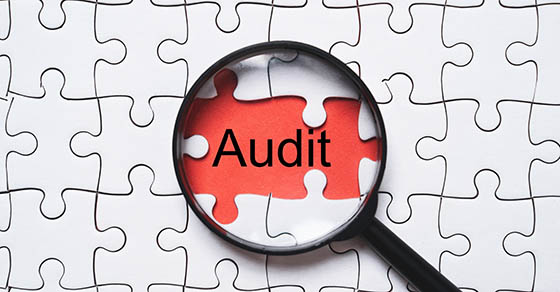Benefit plans adhere to the regulations established by the Employee Retirement Income Security Act (ERISA), which entail numerous rules and substantial documentation. A request could be received from the U.S. Department of Labor (DOL) for plan-related documents — commonly referred to as a “plan audit.”
Here are the basic steps that a DOL plan audit will usually take:

Apart from the smallest enterprises, it is now the standard practice for companies to provide their employee with extensive benefits, such as health insurance and retirement plans. However, a potential hurdle in this process is the necessity for numerous widely adopted benefit plans to adhere to the regulations established by the Employee Retirement Income Security Act (ERISA). No matter how careful your company is with ERISA compliance, it could receive a request from the U.S. Department of Labor (DOL) for plan-related documents. Such a request usually initiates a DOL civil investigation.
The first rule of the day is: Don’t panic! The second is to respond in a timely fashion. Here are the basic steps that a DOL plan audit will usually take:
Initial document request. Generally, a plan sponsor learns of an audit when it receives a letter or phone call from the DOL’s Employee Benefits Security Administration (EBSA) advising those responsible for the plan — typically referred to as “plan officials” — of the investigation and requesting a detailed list of documents. The investigation may be general in nature or target a specific issue.
On-site review and interviews. The investigator may arrange to visit the plan sponsor’s offices and could request additional documents for review during the visit, such as payroll and claims processing records. Often, the investigator will also interview plan officials.
Investigation findings. If the investigator finds no ERISA violations, EBSA will send a closing letter stating that the investigation is complete, and no further action is contemplated. If the investigator does find violations, EBSA will issue a voluntary compliance notice letter identifying the violations and inviting plan officials to voluntarily make corrections.
Corrections and settlement. Whenever possible, EBSA seeks voluntary compliance through full corrections of identified violations and restoration of plan losses. After negotiating corrective actions with plan officials, the agency issues a detailed settlement agreement.
A typical agreement requires evidence of corrections and provides that, if EBSA determines that the agreement’s terms have been fulfilled, no further enforcement action will be taken regarding the specified violations. When voluntary compliance isn’t achieved, EBSA may refer a case to DOL attorneys for litigation. Some situations are inappropriate for voluntary correction — such as those involving fraud, criminal misconduct, or severe or repeated fiduciary violations.
Fiduciary violations. ERISA imposes a mandatory 20% penalty on any amounts recovered from a fiduciary or other person for a fiduciary breach, including amounts recovered under a settlement agreement. Generally, EBSA assesses the penalty in a separate letter, though the penalty may be addressed in the settlement agreement.
Closing letter following corrections. After EBSA confirms that corrective action has been completed and any penalties have been paid, it will send a closing letter indicating that compliance was achieved.
The steps described above could be completed in a matter of weeks or take a year or more. It all depends on factors such as complexity of plan design, issues identified in the investigation and number of potential violations. The availability of documents and individuals for interviews, as well as how cooperative your company’s plan officials are with EBSA, will also affect the duration and severity of the investigation.
Again, if your business receives notification about a DOL plan audit, address the inquiry immediately. Failure to provide requested documents to EBSA can lead to a penalty assessment. A prompt and cordial response, on the other hand, can establish a positive rapport with the investigator.
Above all, obtain the assistance of experienced advisors and legal counsel. Contact your Rudler, PSC advisor at 859-331-1717 for further information, as well as for support throughout the audit process.
RUDLER, PSC CPAs and Business Advisors
This week's Rudler Review is presented by Jim Gyimah, Senior Accountant and Eric Ficke, CPA.
If you would like to discuss your particular situation, contact Jim & Eric at 859-331-1717.


As part of Rudler, PSC's commitment to true proactive client partnerships, we have encouraged our professionals to specialize in their areas of interest, providing clients with specialized knowledge and strategic relationships. Be sure to receive future Rudler Reviews for advice from our experts, sign up today !